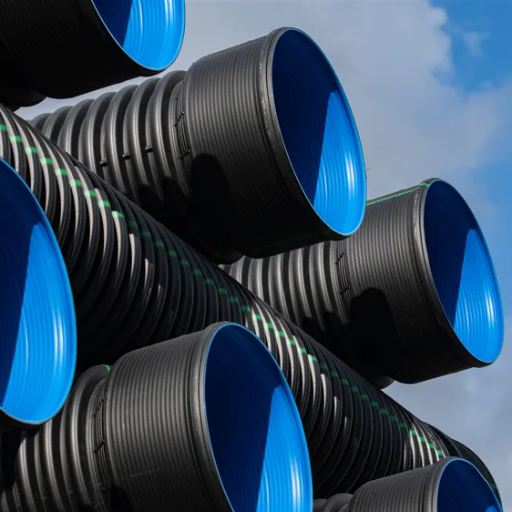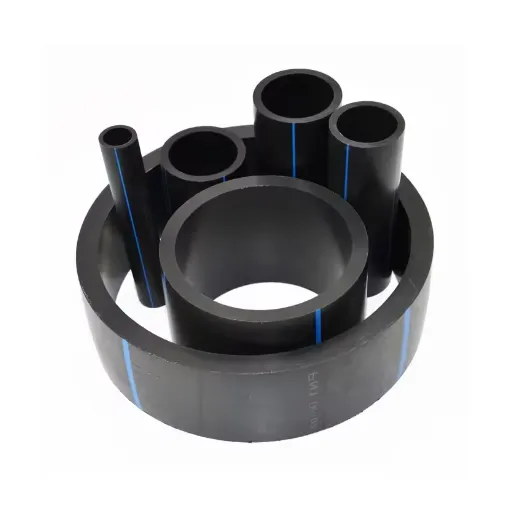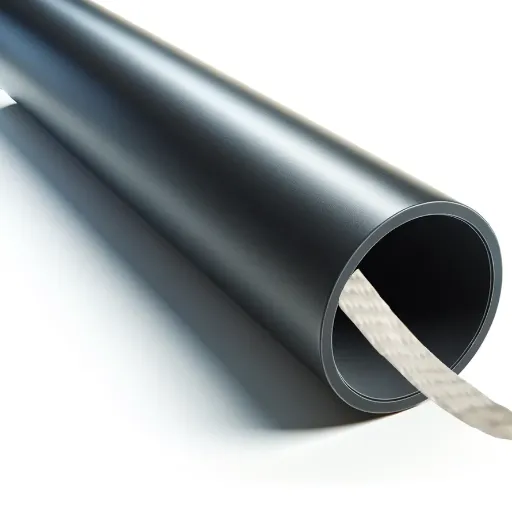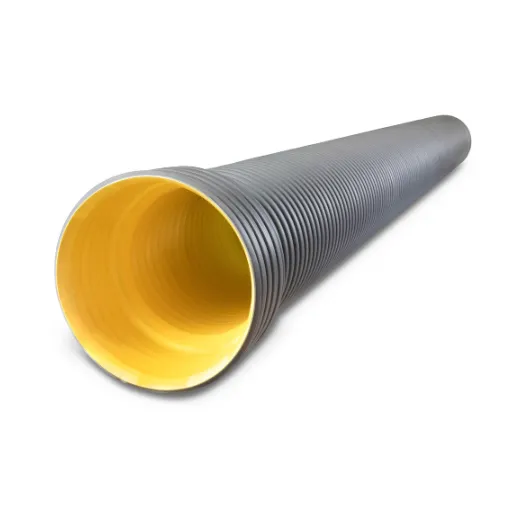Proper installation of HDPE Double Wall Corrugated Pipes is critical to ensure long-term performance, structural integrity, and optimal functionality in various applications, including drainage and sewer systems. This guide provides a step-by-step breakdown of the installation process, empowering professionals and contractors with the technical knowledge necessary to execute the task efficiently and effectively. Whether you’re preparing for a large-scale infrastructure project or a smaller municipal installation, this comprehensive article is designed to equip you with best practices, industry standards, and practical tips, ensuring a successful outcome. Read on to discover the essential techniques and considerations for installing HDPE Double Wall Corrugated Pipes with precision and confidence.
Best Practices for HDPE Double Wall Corrugated Pipe Installation
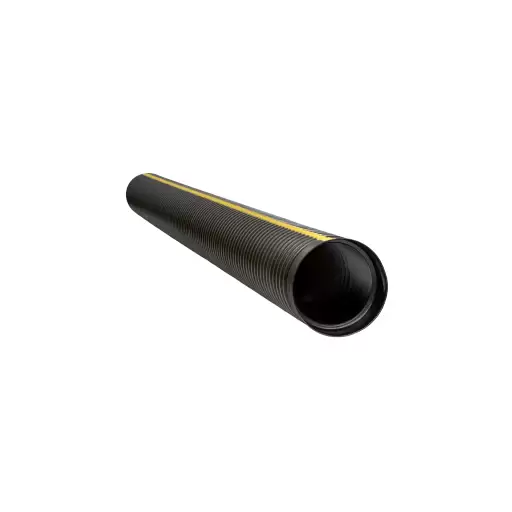
Trench Preparation Techniques
The necessary steps that should be taken to strengthen the trench about the HDPE Double Wall Corrugated Pipe setup, and also in preventing it from collapsing, should be the correct ones. Such an activity comes in many ways, and the first one would be to conduct an assessment of the soil type and soil condition at the point of installation. Make sure that the excavated trench is in the ground that is firm and there is no debris, loose soil, hard stones, or plant material that could harm the pipe support or alignment. It is recommended that the trench walls be vertical or inclined, depending on the amount of soil and the hole’s structural stability, to avoid collapse during pipe installation.
One more thing that is hushed in the conditions of HDPE DWC Pipe’s installation is the calculation of trench dimensions. To be exact, this should not be a problem because the distance from one outside diameter of the pipe to another outside diameter of the pipe could be determined. This factor accordingly implies that the trench’s width has to be expanded by at least 12 inches on the pipe’s outer diameter attached at the inside edge on either side, assuming that the previously made part of the pipe would be quiescently bedded within the trench after converging the pipe walls. No exaggerations, but the depth will be flat and should not have any soft grounds. Such zones are recommended for the restoration of soft sections by cutting and filling them with the level voice granular material to give a sustaining base. Other areas with corrosive soil conditions may additionally call for preventive mitigating actions, including, for example, laying liners with geotextile.
Trench preparation cannot be completed without referencing bedding materials. In the trench, one should use adequate fretting materials such as well-drained, angular, and compactable gravel or crushed stone, or even coarser sand. The bed should not be wasted off and should be under the pipe at the uniform level, covering at least 4 to 6 inches below the pipe. Finally, after preparing the backfill, a layer of cushion material can be used along the pipe side to help keep the foundation intact, and the normal operational stresses on the pipe can also be anticipated without any concerns.
Proper Pipe Alignment Methods
For a functional, durable, and easily operational piping system, it is crucial to ensure that the pipes are installed properly. In order to do so, there should be a precedence of proper alignment and installation of piping abbreviations at each level.
Make several reference lines and total sites along the work zone or trench using levels or string lines. A few tools like the laser levels and string lines are enough to give a guide along straight alignments that enforce minimum diversion of the facilities in there; therefore, the pipe laying would be in no way off the line within 1meter. Always correct these benchmarks as one progresses in construction to adjust to any changes that may have occurred on site or due to activities carried out.
Next, hold the pipe sections securely in place when laying them so that unwanted movements do not occur. This is normally achieved by fashioning clamps or supports for the time being to hold the pipes. When the pipes are put together, check each joint to make sure that the pipes are fitted tightly with no gaps between the ends or rotational displacements. Such unfit joints create regions of intense pressure, which negatively affect the performance and longevity of the piping structures.
After that, aim to take the alignment again at the end of the installation, but before the backfill starts. Employ precision measuring instruments to check whether the installed pipe conforms to the required inclination or grade, primarily for gravity drainage systems. Adhere to the recommendations of the pipe provider and the applicable building standards to avoid engineering failures in the future.
Backfilling Techniques for Durability
The practice of backfilling properly is crucial in guaranteeing the structural integrity and longevity of the piping system. The process of executing this practice starts from the choice of the appropriate type of backfilling materials. Normally, proper compaction materials such as sand or gravel are commonly shunned because of the superior characteristics of compaction with these materials and their resistance to settling or shrinking over long periods. Avoid the usage of materials such as expanding clay or organic material, as their swelling is considerable, and it would result in foul conditioning on the pipe because the materials maintain a lot of moisture.
Placing backfill begins by first compacting the backfill material around the pipe, being certain there are no pockets. This is usually done in thin layers, termed lifts, with each layer receiving its share of optimum compacting. It is not allowed, much as it is indicated from the lifts to other lifts, to pile up more than 6 to 12 inches maximum lift thickness. See also that the material is equitably applied about the pipe diameter so that vertical support is maintained in the pipe and deflection and slumping away from the vertical, including punching of the pipe, are restricted.
Also, the surface shall be properly inclined during the final backfilling. Furthermore, explicitly drain the layer above the pipe to ensure that water does not pass in excess into the underlying soil, thereby losing its strength. Water testing and pressure monitoring on the installation of the system’s internal components, as well as the backfilling, should be done so as to confirm that the system still complies and satisfies the design load after the backfill is completed. Adhering to such precautions not only helps figure out how to comply with security requirements, but also optimizes the long operating life of the piping system.
Avoiding Common Installation Mistakes
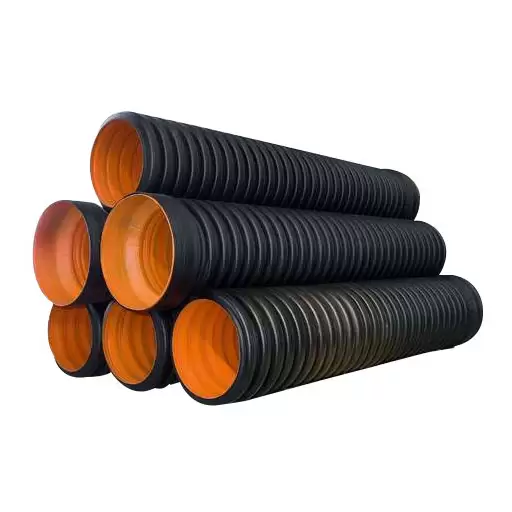
Preventing Improper Sealing
Ensuring a proper seal is in place during the initial stage is paramount to the continued success and effectiveness of pipework. An insufficient seal will ultimately result in a fault within the system, for example, a leak, unhealthy changes within the resistance, structural faults, and flow problems. One of the main things that prevents sealing is neglecting to prepare the components by cleaning and checking the joint surfaces. It is necessary to avoid any adhesive aids, such as remnants of dirt or oil, as well as any irregularities on their surfaces, because they are capable of turning sealing rings and other materials used for installation into their semi-permeable forms. In addition, it is recommended to accept the surface preparation guidelines of the manufacturer and treat only uncontaminated and clean components before installation.
Improper application of force to fix metal joints or tightening bolt heads and nuts is one more common mistakes in the pipeworks. If the junctions are overstressed, they can damage the seals or permanently deform the pipes, and the system can be left with gaps in the tension zones if the tightening was inadequate. Applying more force than specified in tightness specifications would mean better sealing although using controlled equipment although it might cause other problems and maintenance procedures such as checking the compression in the seals or the security pressure under various temperatures thereafter the reservoir is put into service could prevent situations of slackening naturally getting provoked by vibration or fire, heat and expansion.
There is also an issue of making sure that the materials being used are continuously compatible with each other until a proper seal is put in place. It is inherent that care is taken when choosing the gasket, vines, or joint materials concerning the actual conditions of operation, such as temperature, nature of chemicals, pressure, and so forth. And for example, replacing such a gasket in systems that use elevated temperatures would cause the gasket to break down very fast. This is to say that even where a gasket is used, it is possible and it is only inappropriate that exceed the temperature within which a gasket can be used. This is well guarded as there has to be comprehensive research on the project, and also the materials should be selected from the design data and test protocols in place. The two challenges shall critically undermine any improvements that are made over the typical issues in designing a petrochemical piping system, which often lead to shutdowns and repairs that cost the client a lot of money. commonly.
Avoiding Incorrect Pipe Placement
A proper analysis due to improper pipe placement is striving to avoid any wrong pipe placement by paying very close attention to the design and the layout of the Project. During the stages of analysis, the compliance with the design drawings, space limitations, and methods of use will be taken into consideration. I will prefer employing advanced methods of pipe analysis, such as the use of computer-aided design software, to design precise pipe paths and investigate potential difficulties and conflicts inherent in the given system. This early stage of project development is very important as it eliminates the possibility of manufacturing and installation errors, which will result in improper or out-of-place piping.
Still, I maintain that there are specific standards and practices common in various fields, such as ASME and API. Such guidelines form the basic principles for pipe placement, taking into consideration correct distances, angles, as well as support systems. The same inspections are done once the pipes are installed and measurements are verified for compliance, and discrepancies brought to attention. This level of precision is required to place everything in such a way that allowances of expansion are not crossed, areas of possible vibrations are properly catered for, and more significantly efficient volume of work is achieved.
In conclusion, there is a need for continuous updates and interactions with the team. I do this by being very much involved with engineers, designers, and technicians on the ground to address the inconsistencies in the drawing. The effect of this kind of interaction is the reduction of errors in the construction of the piping, where people cannot shun their responsibilities. The placement of the pipes must be done properly not only because of how the instructions should be followed, but how a proper duty, the right standard, and teamwork suit perfectly the activity.
Identifying and Addressing Overlooked Issues
Many critical components in the creation of a pipe network can be overlooked, which in turn pose issues on the project’s time frame and the effectiveness of running the system. Among the issues that may be overlooked are thermal expansion, design with incompatible pipes, and insufficient support of stressed piping. The specific risk in this regard is that thermal expansion can cause a pipe or a joint to deform at a joint or cause a joint to fail, should its design ignore this factor. In the same manner, the absence of materials that are compatible with each element within the system can result in unwanted reactions that will take a toll on the well-being of the system over time.
Also, in order to find and overcome those problems, the availability of modern simulation tools is necessary. Computational Fluid Dynamics (CFD) and Finite Element Analysis (FEA) help policy writers test the construction of the system under multiple conditions to see any potential weaknesses prior to most of the work being done, i.e., before construction is done. Further, the all-rounded implementation of recommended standards of practice, such as the ASME B31.3, takes care of all health and safety concerns, including material considerations and system, ensuring all functions are evaluated and assessed. There is also a need to involve, for instance, cross-functional teams in the design stage to facilitate issue identification because when there are different professionals in a group, there are lower chances of missing some of the issues.
Utilizing such systematic approaches together with comprehensive review and on-the-go assessments during procedure operations often eliminates issues before they emerge, and that is actioned. With such segmented efforts, risks are held to a minimum, and huge expenditures for corrections are reduced. The eventual usefulness of piping networks is assured through securing them by applying the measures encapsulated in the system.
Advantages of HDPE Double Wall Corrugated Pipes
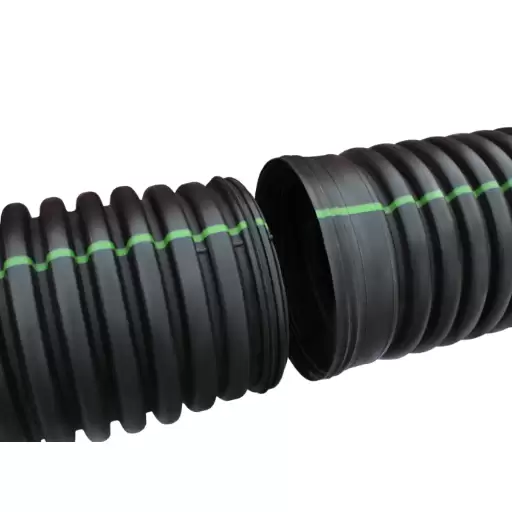
Durability and Longevity
The HDPE double-wall corrugated pipes are highly resistant due to the special features of the material and the way they were made. High-density polyethylene is well known for its resistance to both chemical action and physical impact. This property prevents breakage of the pipes as well as prevents them from deteriorating when in demanding ambient conditions such as the presence of harsh chemicals, temperature extremes, and high levels of humidity. The geographical convention of the pipe of the double wall type is due to the matter within the corrugations creating a higher modulus of the crystallized structure, which, as a result, imparts good resistance against external loads as well as impacts. The type of engineering protects the operation of the pipes for a long period of operation, even under the most difficult conditions, such as underground, or in items that require heavy industry.
The main reason that commercial enterprises choose such pipes is that they are economical and can last a long time because they are resistant to chemical corrosion and mechanical abrasion. HDPE, unlike many other traditional materials such as metal structures and concrete, its a peculiar chemical composition that does not allow for such inhibitors to due so, even against very strong acids and alkaline solutions, and also does not allow for these and other hazardous situations created by salt. Finally, this aspect tied to them with drains feeding Biosolids treatment facilities is also very attractive because such aggressive media also do not affect this material. When subjected to normal operating conditions, HDPE pipes have been observed to deliver a life span of over 50 years, which enhances fade-off charges for routine checkups and the related replacements. Conversely, the increased span prolongs the costs associated with them and makes it reasonable to use them in huge public works where expenses can occur for many years.
In addition, compared to other polymer material solutions, HDPE DWC pipes perform better in terms of environmental stress cracking. Their collection enables them to bend without cracking, hence remain usable even in the event of soil movement and settlement. These features, together with their being friendly to the environment and the reduced number of servicing requirements, make such a design popular for the treatment of stormwater and waste streams. They will secure the infrastructure in the long run through efficient use of these mains, thus minimizing downtimes and waste of money.
Corrosion Resistance Benefits
For any structure to be put up or improved, the performance and function of a structure are affected because the rate of wear and tear can be accelerated by not using the correct materials for the purpose. Using materials that are, however, resistant to this wear and tear increases the repair period due to the inefficiency of frequent breakdowns of the structure. Herein lie five advantageous aspects of establishing corrosion-preventing measures in the plan:
- Increased Lifespan: The use of materials that resist corrosion often has the effect of postponing the effects of aggressive environmental agents such as moisture, chemicals, and oxygen. For instance, in aggressive environments, such pipelines can give a use period 50% longer compared to ordinary steel pipes.
- Lower Maintenance costs: The service containing corrosion requires fewer tests, repairs, and replacements, which means that there is no need to allocate these resources, i.e., a lot of funds can be saved. It is estimated that structures made of corrosion-resistant materials can save maintenance costs by approximately 35% over a 20-year life span.
- Increased Safety of the Installation: With time, corrosion deteriorates the structural integrity, which may lead to failure. Corrosion-inhibiting materials allow the benefit of an installation that will always operate safely and without leakages or failure, especially in critical processes such as water and chemical transportation systems.
- Less Environmental Impact: Use of materials that resist corrosion in the current installations prevents external environmental contaminant sources. For instance, conversion to a non-corrosive raw sewage collection system, which eliminates the use of corrosive pipes, may reduce the amount of chemicals seeping into the ground and spread the growth area of the problem.
- Better Working Conditions: Corrosion can be a health and safety risk because links may develop, giving rise to adverse events such as burst pipes and building collapse. Applying non-corrosive materials will certainly help in the elimination of dangers posed to the employees of a plant, e.g., the health risks associated with working in a blast furnace that is heavily rusting down.
These advantages operate in synergy by reducing corrosion attacks such that the infrastructure is developed most effectively.
Cost-Effectiveness of HDPE Pipes
High-Density Polyethylene (HDPE) pipes are considered highly inexpensive yet reliable solutions in many sectors, in view of the limited level of capital expenditure in this respect, low spending on maintenance, and long-lasting properties. Contribution to their cost efficiency is particularly notable in such aspects as the resistance of HDPE pipes to corrosion, friction, as well as chemicals. Unlike usual metallic pipes, HDPE pipes never become prone to frequent breakages, and hence there is no need to replace them almost on a frequent basis, which in turn would reduce the long-term operational costs radically.
In addition to the above, the HDPE pipes are the pain weight compared to other materials such as steel or concrete, which is ideal since it reduces the cost of transportation and mounting. Owing to the pliability of the HDPE pipes, fewer of them are joined, giving space to leaks, which make them even cheaper to maintain. Other than that, when it comes to the operation of HDPE pipes, even possibility of leakages is very low, also because the design of the pipe includes the fusion of the weld, which reduces the overall durability risks of the infrastructure.
On the subject of environmental friendliness, HDPE tubes, as duly mentioned above, have a smaller carbon footprint for at least two reasons: they are easily recycled, and the process of manufacturing HDPE tubes is known to be less energy-consuming as opposed to other materials. It has been proven that energy consumption during the production and transportation of plastic pipes, including HDPE pipes, is lower than that for conventional materials and therefore the system of plastic pipes has significant economic, as well as environmental benefits. Together, these aspects prove HDPE pipes to be a good, inexpensive construction means in terms of quality.
Applications of HDPE Double Wall Corrugated Pipes
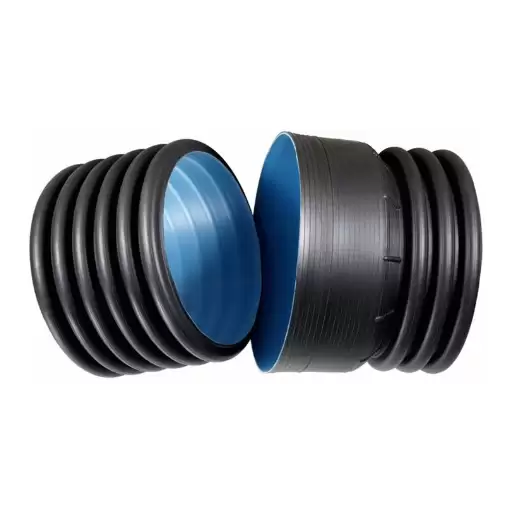
Use in Agriculture
To a great extent, double-wall corrugated pipes made from high-density polyethylene (HDPE) have come to represent an indispensable part of agricultural setups, primarily due to their stamina and resilience, besides their malleability and usefulness. It is for this reason that such pipes have taken a center stage in drainage and watering systems in places owing to such factors as light weightness and safety in subjecting as compared to the traditional ones made in concrete or metals. This construction offers a high level of resistance to various soils as well as to forces and consists of a smooth inner wall for effective water jet and a corrugated outer wall within which bones are provided for strength.
The system of HDPE pipes is different from the conventional practice in that it allows a greater flow, which is crucial for water management and irrigation processes in drought-prone or flood-prone regions. For example, HDPE pipes have been proven to enhance irrigation efficiency up to 30% over conventional ones, thus minimising the water wastage due to redundancies and evaporation. Moreover, the durability of the HDPE is at times more than fifty years, which consequently minimizes the expenditures of the farmers in the future. Also, due to the physical characteristics of the HDPE pipes, these can be used in conjunction with other practices such as drip irrigation systems and intelligent sensors, thus enhancing the crop yield.
It is the use of modern agricultural practices that tackles the issue of irrigation concerns. HDPE double-wall corrugated pipes are of immense help in redefining the growth of agriculture.
Applications in Construction Projects
The widespread application of high-density polyethylene (HDPE) double wall corrugated pipes in construction is attributed to the high force-to-unit weight ratio, result to timber attack, and long-lasting performance. The list below reveals, however, that five areas are fundamental in earmarking the use of the same pipes for service. Dew of these applications is what they include:
- Stormwater Drainage Systems: Stormwater management is very common where HDPE double wall corrugated pipes are the main choice, due to their superior ability to manage large capacities of water and the quick flow rate of water. The blending of the plain interior and the corrugated exterior matches the aesthetic with the structural integrity, which can well take up these loads up to 106 kPa during traffic intensity conditions.
- Sewage and Wastewater Systems: These pipes are best suitable for sewage and wastewater transportation services year over year without recoiling, cracking, or being eaten by corrosion, abrasion, chemicals, etc, again due to the materials of the pipes. Thanks to the mentioned lifespan of more than 50 years and the necessity of routine maintenance is minimized, making them an option to be considered in most civil infrastructure, given the economic aspect.
- Road and Highway Subdrainage: HDPE corrugated pipes as wings against the applied pressures underneath pavements such as roads and highways, easily take off any water, which presents a danger to the integrity of the pavement if the water inundation occurs. Such properties allow the pipes to be used for a long time as they can absorb and rid any vibrations and shifts in the ground as a result of the heavy weight of motor vehicles.
- Culverts and Cross Drains: Such a unit, designed like a pipe, functions as a culvert or cross drain in the system of building system. Installation work is simplified, including in the most inaccessible areas by virtue of their lightweight, and such pipes bring down construction expenses by a minimum of 30-50% of the normal cost of construction using conventional construction materials.
- Landfill Drainage Systems: With the ability to block out wastewater and gases and protect them from aggressive effects, these pipes are incorporated in landfills to assist in water drainage. These systems are efficient in the transportation of liquid as well as in venting gases, which makes it possible for the processes of waste management to be safer since the requirements are more in line with environmental laws.
High Density Polyethylene Corrugated Pipes with the above partitions that are mentioned in these applications play an important role in the building sector to maximize its efficiency as well as to meet the objectives of today’s sustainable infrastructure design.
Infrastructure Development and Water Supply Systems
HDPE double-wall corrugated pipes are becoming increasingly important in present-day environmental and water supply infrastructures. This is as a result of the ability of these types of pipes to withstand different environments since they are extremely strong, light, and cheap. With these pipes, extremely high volumes of water are safely and healthily distributed, which later participates in the salutary operation of both municipal and industrial water systems. Also, the most remarkable property of these pipes is chemical corrosion, the most important property, the ability to operate under high pressures and withstand high temperatures without any breakdown, which increases its anticipated marvel use.
In addition, the Influence of such pipes within the stormwater management systems in cities helps in the shape of urban flood problems, which are quite crucial to avoid fast-moving and standing waters of floods during design. Modern HDPE materials technology has also advanced towards the production of bigger diameter pipes, in order to offer much higher flow rates, tailor-fitted for both construction and rural areas. The implementation of the said pipes is also inclined towards minimal wastage of water during transportation, in line with the current concerns for sustainable development.
When integrated in infrastructure projects, this feature, together with the fact that it is lightweight and made out of flexible material, makes it easy to install and reduces the costs, together with construction time. The increasing population and trends of the changing climate require resilient and eco-friendly infrastructure development. This is where the use of HDPE double wall corrugated pipe comes in and all this is in line with the current neds for smart and enduring infrastructures.
Maintenance Tips for HDPE Pipes
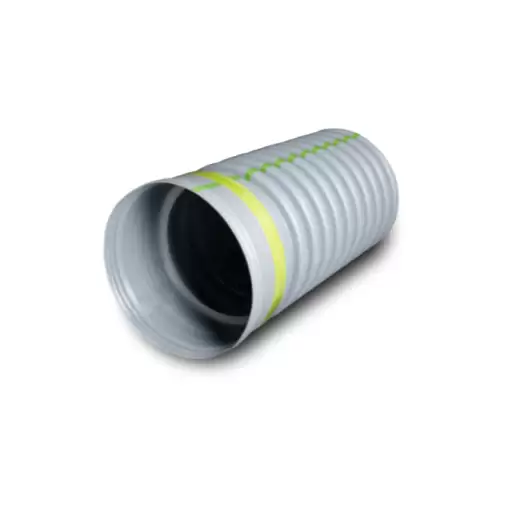
Routine Inspection Guidelines
HDPE double-wall corrugated pipes are sensitive to wear and other detrimental conditions. In order to preserve the serviceability of this piping system, proper inspection in line with the up-to-date pipeline management techniques should be done regularly. The essential components that are critical for the inspection include the following:
- Visual Inspections: Conduct comprehensive external examinations to identify wear such as dents, coating layers, surface fissures, or other damages. Image the areas using high-resolution imaging devices to keep a record and for future interpretation of the images.
- Joint Integrity Testing: Look at and verify that there are no missing, deformed, misaligned, moving, or open joints. The accuracy can be improved by using acoustic testing systems and other ultrasonic non-destructive testing techniques.
- Internal Pipe Scans: The most up-to-date robotic devices or video equipment one can get hold of can be used to study the inside of the pipes. With these systems in place, these problems are contained, whether it’s a clog, deposition, or deterioration of the inner surface, making manual access of areas such as tanks and storage heaters obsolete.
- Hydraulic Performance Monitoring: Pass the pipeline mechanisms under a test that measures flow rates, cavitation, irregular hydraulic pressures, apertures, and so on. They are enabled by sensors that are augmented by IOT devices, to collect real-time data that can be compared with the original design and identify failures. Such technologies and sensors could provide the basis for managing the asset effectively and enhancing its performance.
- Environmental Assessment: Consider the characteristics of the soil and the surrounding atmosphere to determine that the pipe is not under extra load because of external factors, including shearing of the soil or high levels of humidity.
- Record Keeping: Keeping meticulous records of the inspections conducted, including what was observed, the dates when the inspections were conducted, any repairs and what was done, as well as repeating problems, is important. The more common events, such as maintenance and repairs, will benefit from the nature of the methods, which use data analysis as they can also be tracked against the trends, thus predicted.
These practices, in conjunction with the state-of-the-art technologies, will lead to better performance, higher serviceability, longer life cycle, and, hence, satisfaction of the infrastructure needs. Continual, structured inspection routines together with data in place serve to reduce the time to repair and associated costs when systems fail, as well as to increase management and operational efficiency.
Effective Cleaning Methods
Cleaning of HDPE (High-Density Polyethylene) pipeline systems is a process that requires the use of systems and methods that not only enhance flow and maintain the desired mechanical performance but also prevent physical damage. As such, what is often more preferable is the use of mechanical pigging that involves the use of foam or sponge pigs or even solid pigs to scrap off the dirt, scales, and deposits from the pipe wall. The method of pigging is not intended for the removal of the substance in the pipe, but also works in preventing the chances of corrosion from the chemicals contained in the product, which would enhance the life of the system.
If the cleaning is done using chemical methods, less aggressive cleaning agents can be applied, for example, some mild detergents or biodegradable agents that would dissolve the grease and stop the biofilm formation without any damage to the pipe material. More modern techniques, such as the use of ultra-high-pressure water stream developed today, allow for cleaning of the pipes and equipment even in cases of the most persistent build-up and can help avoid the consumption of damaging chemicals.
In the interests of preserving the cleanliness and sanitary conditions of the systems without damaging them, it is most important to be able to identify the residual deposits via ultrasonic or video camera inspection after any cleaning action is performed. Tasks for comprehensive cleaning, devises should factor in the wear, materials, and environmental issues that impact the piping layouts, best practices for cleaning frequency improvements with necessary insights to deal with the infrastructure, and pitfalls that tend, therein, to cause wear of the system where unnecessary.
Addressing Wear and Tear on HDPE Pipes
The damages inflicted on HDPE (High-Density-Polyethylene) pipes are a result of a combination of factors, such as mechanical, environmental, and operational, and solutions to these problems are best achieved through the principles of evidence-based medicine or good practice. Physical deterioration is also caused by abrasive particles in the transported also known as ‘mass flow’, especially in the conveyance of solid or semi-solid (slurry) materials. Higher flow rates may be linked to greater rates of wear of the lining. As a result, the use of resins and the protection against corrosion challenge the operability of the system. This is often achieved by the use of automatic protective devices such as gland seals to control the flow rate.
Environmental settings such as aging, getting exposed to UV lights, and being subjected to temperatures that change from time to time can affect the useful life of HDPE pipes as well. Although it has been observed that HDPE can offer the most reliable solutions to many environmental stressors, its structural materials experience surface cracking with long periods of direct sunlight exposure. This can be prevented by either selecting the right material, for instance, the UV-stabilized pipes, or the addition of coatings after installing the pipes.
Operational challenges like identifiable surge pressures and issues with installation also mediate against the results. This can be best explained using the stress distribution under load in an elastic medium, with the load being transmitted down a liquid, water in this case, which is subjected to a hammer effect, especially upon colliding. When there is a high probability of this occurring, it is best to install high-temperature monitors. However, these water pressure forecasts must expand further in coverage because, in the end, what is most important is how data is applied in the form of these predicted actions for effective lawn water conservation techniques. In addition, the safe procedure and on-site handling of installation operations should also aim reducing the risks created by stress concentrations since particular focus will most likely be placed.
References
Frequently Asked Questions (FAQ)
Q: What is the purpose of the HDPE Double Wall Corrugated Pipe Installation Guide?
A: The HDPE Double Wall Corrugated Pipe Installation Guide serves as a comprehensive guide that outlines the necessary steps and considerations for successfully installing HDPE double wall pipes. This guide helps ensure proper installation, maximizing the service life and efficiency of the piping systems.
Q: What are the benefits of HDPE double-wall pipes?
A: HDPE double-wall pipes offer a variety of applications, including drainage and culvert systems. Their high ring stiffness provides excellent resistance to ground movements, making them suitable for various environmental conditions. Additionally, the nature of HDPE ensures durability and longevity in installation.
Q: How do I determine the size of the pipe needed for my project?
A: The size of the pipe depends on factors such as the volume of water flow, the depth of installation, and the specific requirements of your project. Consult the installation manual for guidance on selecting the appropriate pipe size for your drainage or water pipe needs.
Q: What are the installation procedures for HDPE piping systems?
A: The installation procedures for HDPE piping systems involve several key steps, including site preparation, trenching, laying HDPE pipes, and backfilling. Following the installation guidelines in the HDPE Double Wall Corrugated Pipe Installation Guide will help ensure a successful setup.
Q: Can HDPE pipes be used for gas applications?
A: Yes, HDPE pipes can be utilized for gas applications, specifically in the form of PE gas pipes. When installing gas lines, it is crucial to follow the specific installation guidelines to ensure safety and compliance with local regulations.
Q: What tools are recommended for HDPE pipe installation?
A: Essential tools for HDPE pipe installation include a pipe cutter for accurate cuts, shovels for trenching, and compaction equipment for backfilling. Utilizing the right tools will facilitate an easy installation process and contribute to the overall success of your project.
Q: How does groundwater affect the installation of HDPE double-wall pipes?
A: Groundwater can impact the installation of HDPE double wall pipes by influencing the depth of installation and the stability of the trench. It is essential to assess groundwater conditions before installation to avoid potential issues with the piping system.
Q: What is the installation time for HDPE double-wall corrugated pipes?
A: The installation time for HDPE double-wall corrugated pipes can vary based on factors such as project size, site conditions, and crew experience. However, following a well-structured installation guide can help streamline the process and reduce overall installation time.



